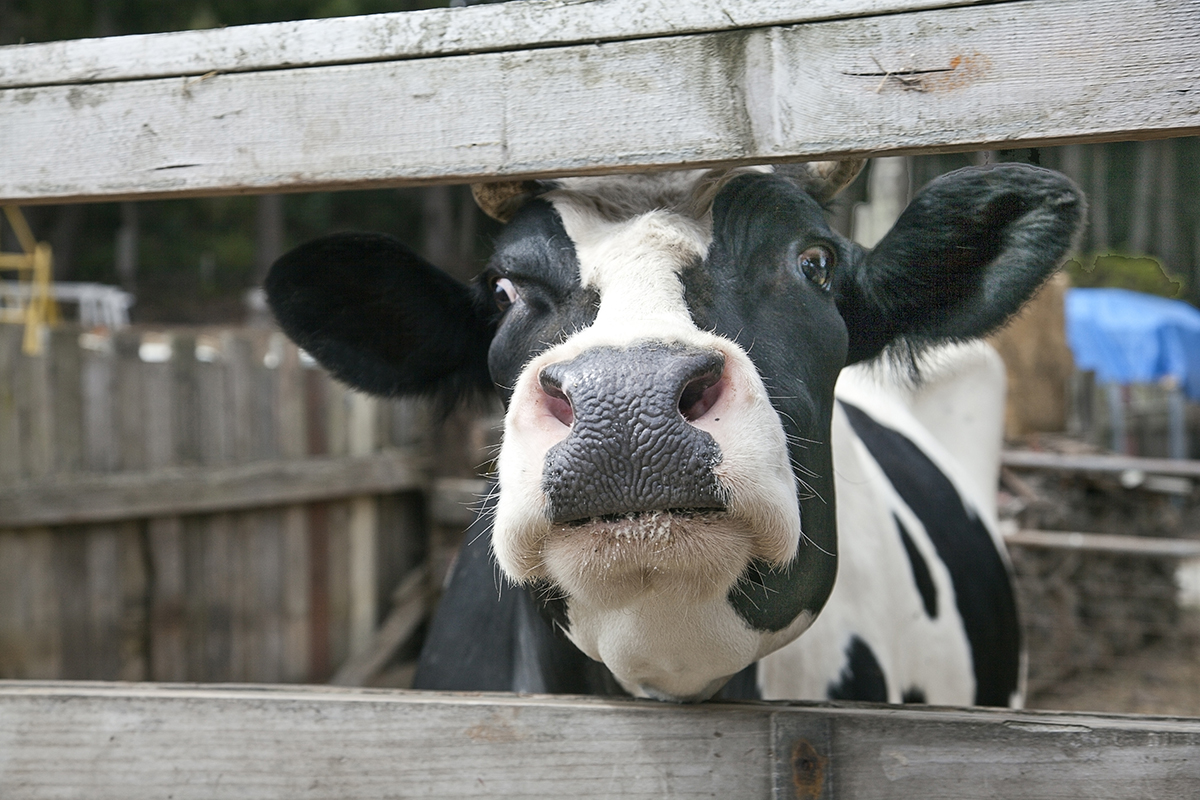'Atypical' Mad Cow Case Identified in Alabama

An 11-year-old beef cow in Alabama recently tested positive for the brain disease bovine spongiform encephalopathy (BSE), commonly known as mad cow disease.
There are two types of BSE — classical and atypical — and the cow was diagnosed with atypical BSE, which is rare and arises spontaneously in older animals, U.S. Department of Agriculture (USDA) representatives announced July 18 in a statement.
Officials with the Alabama Department of Agriculture and Industries (ADAI) detected evidence of the disease during a routine inspection of the cow's body after it died at a livestock market. The inspectors said that the cow did not pose any threat to human health, nor was there a risk that other animals might be infected, ADAI representatives said. [Top 10 Mysterious Diseases]
BSE is a progressive disease that damages cows' nervous systems; symptoms include uncoordinated or clumsy movement and unusually nervous or violent behavior. The disorder is diagnosed by examining brain tissue under a microscope after the animal's death — the brains of infected cows appear spongy, according to the Food and Drug Administration (FDA).
It is unknown how cows become sick with atypical BSE, but cows usually contract classical BSE by eating feed that contains bovine by-products — such as bone meal — that originated in a cow that had the disease. The disease is caused by an infectious protein called a prion. Once a cow is infected, the prions may lurk quietly for four to six years before the animal shows any symptoms.
Mad cow disease is not transmissable between animals, but there is no vaccine and no cure, according to the FDA.
People who eat infected cows can contract a variant of BSE known as Creutzfeldt-Jakob disease (CJD), but this illness is not widespread — even in the United Kingdom, where mad cow disease has infected more than 1 million cows, only 227 people have been diagnosed with CJD since 1996, and the risk to people in the U.S. is "extremely low," the Centers for Disease Control and Prevention (CDC) says.
Sign up for the Live Science daily newsletter now
Get the world’s most fascinating discoveries delivered straight to your inbox.
The cow that died in Alabama from the atypical version of BSE did not contract it from contaminated feed, officials said. In fact, the use in animal feed of protein from any mammal has been prohibited in the U.S. since 1997, and high-risk tissue was banned from animal feed use in 2009, USDA representatives said in the statement.
This is the fifth cow with BSE identified in the United States since 1993, according to the CDC.
Original article on Live Science.

Mindy Weisberger is an editor at Scholastic and a former Live Science channel editor and senior writer. She has reported on general science, covering climate change, paleontology, biology and space. Mindy studied film at Columbia University; prior to Live Science she produced, wrote and directed media for the American Museum of Natural History in New York City. Her videos about dinosaurs, astrophysics, biodiversity and evolution appear in museums and science centers worldwide, earning awards such as the CINE Golden Eagle and the Communicator Award of Excellence. Her writing has also appeared in Scientific American, The Washington Post and How It Works Magazine. Her book "Rise of the Zombie Bugs: The Surprising Science of Parasitic Mind Control" will be published in spring 2025 by Johns Hopkins University Press.









